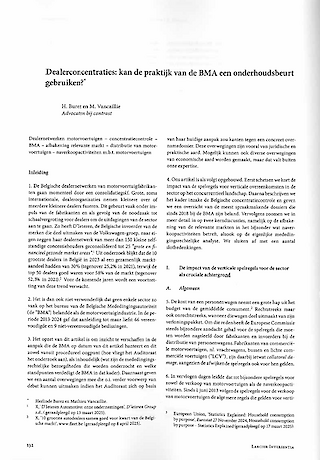In the Picture

Starting 1 September 2014, 'class actions' become possible in Belgium as well
September 2014Imagine . . .
. . . that one fine day you’re summoned to appear before the Commercial Court of Brussels in order to defend yourself against a so-called ´action for collective redress´ filed by the consumer organisation Test-Achats. The letter states that Test-Achats represents a group of consumers. They happen to be customers of yours who allegedly suffered harm because their personal data were somehow released on the internet. Test-Achats is claiming damages to compensate this harm. You call your lawyer and ask him exactly which customers Test-Achats represents, and what financial consequences this case might have for your company. It appears that both the group of consumers and the amount of the damages claim are still undefined, something that appears to be characteristic of such a ´action for collective redress´.
A brief clarification.
Starting on 1 September 2014, it becomes possible to pursue a ´rechtsvordering tot collectief herstel/action en réparation collective´. This is the Belgian variant of the so-called ´class actions´. This legal proceeding strives for a more effective enforcement of consumer rights. For the first time in Belgian law, the ´action for collective redress´ permits a group representative to file a claim on behalf of a group of consumers all of whom suffered harm deriving from a common cause. Such a claim appears particularly interesting when the damage to each of the individual consumers is relatively limited, so that it is improbable that any one of them in isolation would start a proceeding on this basis.
The common cause of the collective harm must have occurred after 1 September 2014.
Who can initiate the action for collective redress?
The action for collective redress can only be filed by a ´group representative´. Consumer associations can act as a group representative, provided that they possess legal personality and sit on the Consumers´ Council or are recognized by the Minister of Economic Affairs (Test-Achats, for example). Other associations can also be group representatives if they (i) have had legal personality for more than three years, (ii) are recognized by the responsible Minister and (iii) have a social purpose that is directly related to the collective harm. Thus, an individual consumer - whether or not represented by a lawyer - cannot initiate an action for collective redress.
What types of harm qualify?
The harm must have been caused by a breach of a contractual obligation of the company, or by a violation of a specific law that is designed to protect consumers. The legislator has (exhaustively) listed 31 statutes, including the competition law, the laws on market practices, as well as privacy legislation, all of which can serve as the basis for an action for collective redress.
How does an action for collective redress proceed?
Only the courts of Brussels can hear an action for collective redress. In a first phase, the judge must rule whether the ´group representative´ has the necessary capacity, and whether the harm qualifies for an action for collective redress (the admissibility decision). The judge must also determine how the group of consumers will be constituted. For this he can choose either an ´opt-in´ or an ´opt-out´ system. The judge is obliged to choose the ´opt-in´ system in the case of physical injury or moral collective harm.
´Opt-in´ means that the consumer can become a member of the group only if he falls within the description of the group and expressly declares that he wishes to join the group. ´Opt-out´ means that each consumer who falls within the description of the group automatically becomes a member of the group, unless he expressly declares that he does not wish to form part of it. In principle, the consumer´s choice is irrevocable. Once a consumer has joined the group, he loses his possibilities to appear individually before the judge for the same damage. This applies both for claims before the civil judge and for a civil claim attached to a complaint before a criminal court. Parallel procedures by consumers who do not belong to the group remain possible; certainly in the case of ´opt-in´ systems, the risk of parallel proceedings remains real.
The second phase is an obligatory negotiation phase between the group representative and the company. If they arrive at an amicable agreement within the contours of the admissibility decision, this agreement is homologated by the judge. If no agreement is reached, the judicial proceeding continues. The outcome of the proceeding is in any case binding for all members of the group.
In the event that the judicial proceeding moves forward, the judge appoints a "loss administrator", whose mission is to ensure the proper execution of the homologated agreement or the judgement.
Concretely
- To be safe, you should proceed on the assumption that the action for collective redress can play a role in all your contacts with consumers.
- This proceeding is of interest primarily for consumers who have suffered a limited degree of harm deriving from a common cause.
- Listen carefully to any criticism from consumer organisations; from now on they carry a big stick, because they can take action as a group representative.
Want to know more?
- The action for collective redress was inserted into the Economic Law Code (Book XVII, Title 2) and can be consulted here.











